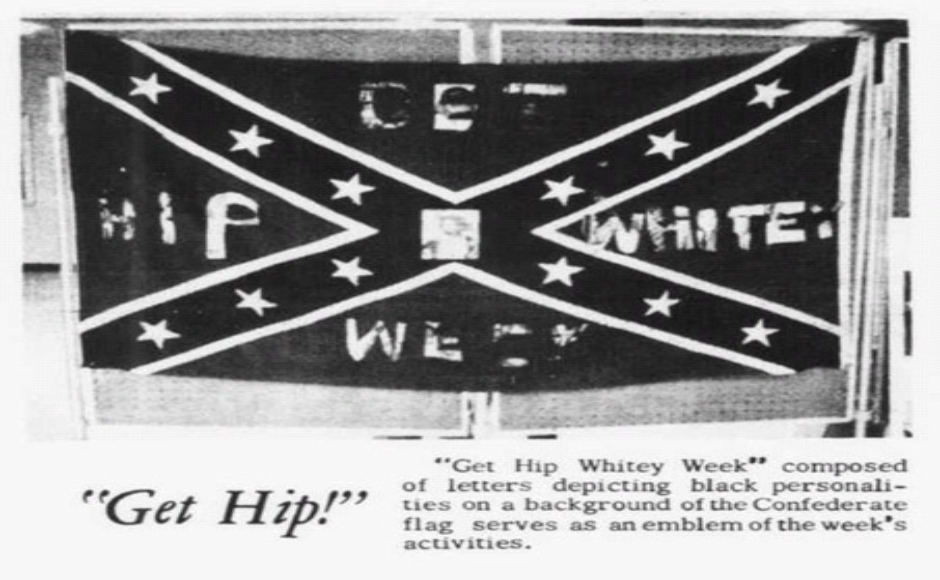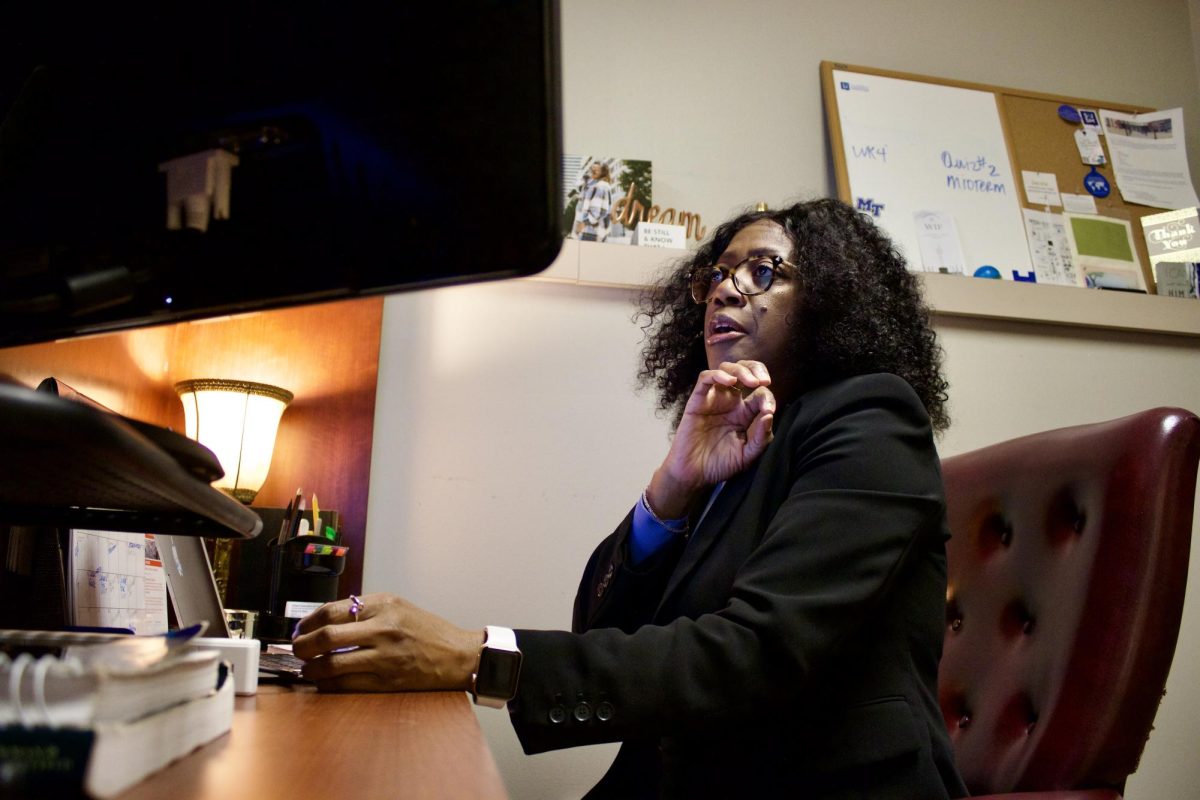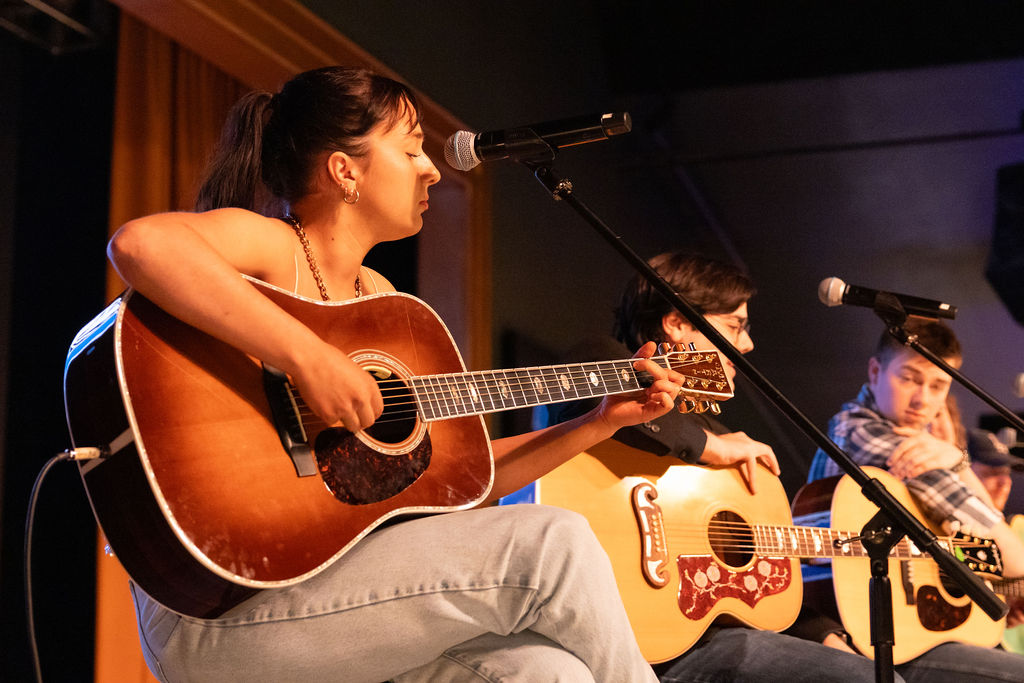The year was 1970.
Bell-bottoms were in, hippies were still going strong and Elton John was making his extraordinary mark on the world of music. The era of peace and love seemed like it would never end.
For some, at least.
For others, particularly African Americans in the south, the fight for equality was still an uphill battle. And this fight could hardly be more notable than in the field of academia.
Although segregation of schools in America had been officially outlawed in 1954, tensions still ran high throughout most of the southern educational system. Even while not being explicitly segregated, African American students were often still treated as outsiders and inferior students, facing constant discrimination and inequality. They often banded together, fighting to create clubs, Greek societies and organizations to represent the black community to the public.
This fight made it all the way to MTSU in the form of one very unique event on Dec. 7-11, 1970: “Get Hip, Whitey Week.” The event, described in a Sidelines news article by Gary Matthews as an event “organized to promote interracial understanding, appreciation of black culture and (an) understanding of black problems,” was a week full of presentations, outreach, discussion and a major speech by comedian and activist Dick Gregory. Included in the presentations were displays depicting the Black Panthers group, Angela Davis, Martin Luther King Jr. and a Confederate flag blazoned with the title of the event.
Raymond Bonner, MTSU’s current track and cross country assistant coach, was a student at the time of the event. With an unassuming air and gentle voice, Bonner presents the perfect picture of a humble man – one who has stories to tell and lessons to be shared. And as one of the first two African American students signed to football scholarships for MTSU, Bonner is used to being a trailblazer. “Get Hip, Whitey Week,” Bonner believed, was its own kind of trailblazer – a simple event meant to foster communication in a way that hadn’t been tried before.
“The Black Student Union came up with that,” Bonner said. “They just wanted white America to be aware that we are human beings and that we are not here to start anything. But we’re here to get an education and to matriculate and do whatever it is that we want to do in life. (We) just wanted an open dialogue.”
But the open dialogue was not appreciated by everyone in the community.
There was much “vocal displeasure” raised across campus against the displays, according to a 1970s Sidelines editorial by Bill Mauldin, as well as suggestions posed by white students that they would rather see different black leaders promoted; instead of the Black Panthers and Angela Davis, they “stated that they would rather have seen pictures of O.J. Simpson, the Harlem Globetrotters and Wilma Rudolph.”
Mauldin snapped back at the ridiculousness of this suggestion, stating that “the Panthers and Miss Davis exist, and the conditions which created their disenchantment and alienation exist. Neither should be covered up … Although (the leaders suggested by white students) have made significant accomplishments, they represent only one side of the spectrum of black achievement, and the other end, even though it may make whites feel less than at ease, also needs to be represented and discussed.”
The backlash against the event, however, didn’t stop with mere words and suggestions.
On the evening of Dec. 11, 1970, the tension came to a head: While on their way back from the Get Hip, Whitey Week’s keynote speech by Dick Gregory, Bonner and a group of friends came upon a burning cross staked in the ground between what is now Corlew and Jim Cummings Hall. This was actually the second cross burning that day – another cross had been found earlier during Gregory’s speech and extinguished by university police before students noticed. The group quickly dismantled and extinguished the flames of the second cross and amassed a following of other students for a march to the president’s house.
Among the group was lawyer and former U.S. Representative for Tennessee’s 6th Congressional District Bart Gordon, who was a student at the time and a friend of Bonner. In an interview for the MTSU Albert Gore Research Center’s series, “Centennial Conversations,” Gordon recalled the evening’s events in detail.
“… It seemed like it was 10:30-11 o’clock … I went outside. I had to empty a garbage can,” Gordon said. “And just as fate would have it, just as I was there, I saw a cross that lit up … And, so, you know, I immediately went over. I was gonna kick it down. And I remember it very distinctly, as I got closer I thought, ‘This is the real thing.’ These were railroad ties wrapped in burlap soaked in gas or kerosene or something … So I started kicking it down. Then I got a little worried, (about) somebody with a sniper — You know, this is real stuff.”
Gordon remembers the crowd that soon gathered and the emotions stirring among them.
“(Two MTSU students) Gerald and Al came out and a trickle of other students,” he said. “Gerald was trying to calm everybody down. And there was a young woman, named Angela Winfrey, and Angela said, ‘Hell no! We’re not going back.’ She sent somebody to each of the dorms to bring all the black students to this location …The decision was that we’re gonna go see Dr. Scarlett (the university president).”
Phyllis Hickerson Washington, who was also a student involved in the march, spoke passionately on the subject with the Albert Gore Research Center.
“I was in my dorm, Monohan Hall. And the young lady ran in the dorm and said, ‘Come on, come on, come on! We’ve gotta go! There’s been a cross burning on campus. We’re marching to the president’s house.’ We dropped everything and ran out the door.”
Another Sidelines article published the following day concerning the event claimed that there were only 60 students gathered in protest.
“I saw 500 students,” said Washington, laughing. “I saw many, many, because I remember we looked around and we thought, ‘We didn’t know we had this many students on campus.’ But the word got out very quickly … We were angry. We were angry about the cross burning.”
“Only time I think I ever called (Dr. Scarlett),” Gordon said. “And I said, ‘Dr. Scarlett, we’re on our way.’ And, to his credit, he was there on the porch, and there was a long discussion. It was hurt, not anger.”
Caroline Scarlett, the wife of President Melvin Scarlett, remembered the event well.
“I must’ve gone to bed about 2:30, and (President Scarlett) was still (on the porch talking to students),” she said in an interview with the Albert Gore Research Center. “I think he decided that he would do a radio broadcast and hit all the classrooms at the same time … But he did say that if students had a serious grievance or anything that had troubled them, he did not want to hear it secondhand. He wanted them to come to the office and discuss it and see what they could do about it.”
And hit all of the classrooms he did. At 9:30 a.m. the following week, Scarlett had every classroom tune their radios in to WMOT to admonish the student body for such an act, saying that “he would not be the president of a university that tolerated such actions” and discussed “what could be done to alleviate future racial problems at MTSU,” according to a notice published in Sidelines.
Gerald Edwards, the president of the Black Student Association at the time, said in another unattributed article covering the cross burning that he believed that the burning “might be a direct result of the activities of the Get Hip, Whitey Week but that the purpose of the activities were not to incite but to inform.”
No one was ever brought to justice, however, for the unfortunately common heinous act.
“I just think that was someone who just wanted to do something for attention,” Bonner told Sidelines. “People like that are starving for attention… When you think about burning the crosses, you think about the Klu Klux Klan and all the marches and all the things and how they tried to hold black people down. That’s why they marched. Because they couldn’t hold them down any other way.”
Scarlett remained a steady advocate for African Americans throughout his term. His advocacy set MTSU on the path to work slowly but surely toward racial equality. One particular issue, however, remains a sore spot to this day.
“We did see some changes, like, for instance, the notebooks stopped having the Nathan Bedford Forrest (symbol),” Washington said in the Gore Center interview. “That was removed from the notebooks and that kind of thing. I know students also wanted Nathan moved from Forrest Hall. We wanted Nathan moved from everything.”
The image of Nathan Bedford Forrest, a Confederate general and early member of the Ku Klux Klan, on campus remains as a reminder of inequality for many African American students to this day and was brought to the forefront of attention recently with the Forrest Hall protests and happenings of 2015 through 2018.
In February 2018, current MTSU President Sidney McPhee and other MTSU officials testified before the Tennessee Historical Commission in an effort to change the name of the controversial Forrest Hall, a campus building named for the historical figure. The university had also submitted a formal request to THC to have the name changed. Eventually, however, MTSU’s request was denied, and the name, Forrest, still remains immortalized on campus.
“A lot of things that happened then were typical things … We used to want to tear (the Nathan Bedford Forrest) symbol down,” Bonner said. “And you know, that was hard on a lot of black students. But we made it through. We sacrificed a lot. I could talk about all the things we sacrificed to make it right, because we weren’t … We weren’t violent. You know?”
Bonner believes that not facing the issue with blatant honesty is what allows problems like the cross burning to happen.
“Race relationship will always have its place in American history,” he said. “And the thing about it is people don’t want to accept that those things happened, and it still happens today. You know, you’re talking about almost 50 years later. It still goes on …(African American students) just wanted to be a part of the school system, you know?… Because a lot of times doing Black History Month, people just sweep everything under the rug, just to let it be. And it doesn’t have to be that way. It’s Black History Month, but it’s part of history. It’s just history!”
Bonner also believes that if the university wants to keep promoting racial equality, open communication is the only way to do that.
“I am somebody,” Bonner said passionately. “And a lot of times when we see black kids, like black kids here in the university now, you might look at them, and they’re nothing. But if you sit down and talk to them, you’ll find out they’re no different than you. They’re just like you … That’s the whole thing – race relations. We don’t know each other. So we stereotype each other.”
“This is an amazing school, and it has changed so much. And, it’s so big now … I just think it all starts with education … I would love to see the student body do more things together,” he added. “The more you do things together, the better you will understand why people do certain things … Whether we want to admit it or not, whether you’re black or white, there’s a lot of people hurt inside. And they don’t even know why they’re hurting or why they have a prejudice against a white person or a black person … There’s so much to conquer out here in this world … I just think that we just need to let everybody have a chance at whatever this life has to offer. So I don’t know how you correct that. I just know that in the midst of all of it, if we don’t love one another and care for our fellow man, it’s not gonna work.”
Between all these struggles, however, Bonner knows one thing: It will get better, it has gotten better and it will continue to do so.
“I just know that it’s all good, because I know that love conquers all,” he said. “God is love. If God is love, and we are in his image, then I can do nothing but love you. It’s life. And we’re not gonna save everybody. But we can try.”
To contact News Editor Angele Latham, email [email protected].
For more news, visit www.mtsusidelines.com, or follow us on Facebook at MTSU Sidelines or on Twitter at @Sidelines_News








